Sports
Cross Country and Track & Field Combine for Eight CSC Academic All-District Honors
Story Links HUNTSVILLE | The College Sports Communicators announced its Academic All-District honorees for the 2024-25 cross country and track & field seasons, and UAH was represented by eight student-athletes with four from women’s team and four from the men’s team. UAH women’s cross country and track & field CSC Academic All-District […]

HUNTSVILLE | The College Sports Communicators announced its Academic All-District honorees for the 2024-25 cross country and track & field seasons, and UAH was represented by eight student-athletes with four from women’s team and four from the men’s team.
UAH women’s cross country and track & field CSC Academic All-District honorees include Abby Weist, Raegan Miller, Jadlyn Debardlabon, and Hailey Smith.
The Chargers men’s squad featured Sam Wilhelm, Nathan Knox, Conner Patterson, and Corey Adamski as CSC Academic All-District. This is Wilhelm’s third straight appearance on the All-District list and the second straight for Knox.
In order to qualify for Academic All-District, student-athletes must have at least a 3.50 cumulative GPA as well as holding either a top-25 finish in regional competition in Cross Country, or a top-50 mark in-region for track & field.
The 2025 Academic All-District® Men’s Track & Field teams, selected by College Sports Communicators, recognize the nation’s top student-athletes for their combined performances on the track, in the field, and in the classroom. The CSC Academic All-America® program separately recognizes men’s track & field honorees in four divisions — NCAA Division I, NCAA Division II, NCAA Division III and NAIA.
The Division II and III CSC Academic All-America programs are partially financially supported by the NCAA Division II and III national governance structures to assist CSC with handling the awards fulfillment aspects for the 2024-25 Divisions II and III Academic All-America programs.
Sports
2025 All-Area Girls Track and Field: Pease keeps stepping forward: Fleming County senior collects state titles, joins Holbrook with honorsBrilliant ends and bright futures: Pease caps of career with more hardware; Holbrook gets coaching honors
CANNONSBURG Kalynn Pease has proven to be a force in the track and field world during her time at Fleming County. Pease capped off her high school career and added to her impressive medal count by claiming two more first-place prizes at the Class 2A state championship meet, finishing atop the pack in both the […]

CANNONSBURG Kalynn Pease has proven to be a force in the track and field world during her time at Fleming County.
Pease capped off her high school career and added to her impressive medal count by claiming two more first-place prizes at the Class 2A state championship meet, finishing atop the pack in both the 400m dash (58.14) and long jump (18 feet, 2.25 inches).
Advertisement
“I’m to the point where, if you put me in an event, I want to succeed at it,” Pease said. “It’s not like, ‘Oh, yeah, I’m just gonna go out here and do this for fun,’ I just want to succeed and learn at every event I’m in.”
The state title in the 400m was an encore from last year. Also in this year’s state meet, she took second place in the 100m (12.36) and 200m (25.35). She won all four aforementioned events at the 2A Region 6 meet.
The stellar performance lands her with yet another prize, this year’s The Daily Independent All-Area Athlete of the Year.
“It feels amazing,” Pease said on receiving the award for the third straight year. “This year, I was really just focusing on healing my shin splints. I’m shocked at what I was able to do with keeping that in mind and thinking about needing to keep from getting more injured so I can compete in college.”
Advertisement
Despite the laundry list of accomplishments that Pease has, they didn’t come without their own set of challenges. Maintaining a healthy lifestyle was a constant goal, but it meant finding an inner balance while training.
“I really had to listen to my body if I was hurting,” Pease said. “There were times when I needed just to sit and call it quits, even though I wanted to push harder and do more. I had to take a step back and tell myself, ‘You’re taking a step back now, but it’ll put you two more steps forward later on.’”
And with her high school career behind her, Pease sets her sights on accomplishing more goals at the next level at Morehead State.
“Maybe I can get to the NCAAs,” Pease said with a laugh. “It’s not out of the question if I can get where I need to be. and I very well could be. Time will tell. But I’m going to miss Fleming County. I never really had a girls team until this year, so I’m going to miss them and the bond between everyone.”
Advertisement
While Pease gets ready for her next challenge, Russell coach Chris Holbrook is also looking to the future, which looks bright for his team.
“I couldn’t be more proud of these girls,” Holbrook said. “We lost a lot from the previous year, so at the beginning, we didn’t know what to expect. We had numbers, but we were just putting them in places. As the year went on, they started to get better.”
The Russell girls team put together a top-notch season and took second in the 2A Region 6 meet behind powerhouse Mason County.
The achievements of this year’s squad landed Holbrook as this year’s The Daily Independent Coach of the Year.
Advertisement
“I’m Coach of the Year because I had good kids,” Holbrook said. “There’s no way around that. I had kids who would do something even if they didn’t want to. They won the EKC. They got second there in Area 7. … We thought maybe runner-up was possible (at region), but just them finding their place was pretty special this year.”
Holbrook said watching the girls find their place and their event was a pleasure to witness.
“It was neat watching it,” Holbrook said. “There’s no overt reaction, it’s just watching them take ownership of what they’re doing. We’ve had a couple of new girls who came in this year, and at the beginning, they were trying everything. Next thing you know, they found their spot and were able to succeed and win.”
And with plenty of returning athletes ready to continue honing their craft next year, Holbrook thinks there are more goals to accomplish next season.
Advertisement
“I want them to just keep going,” Holbrook said. “If we can just keep it going, we’re in a good spot. We’ll deal with Mason when we get there. That’s the goal. Just keep ourselves right there, and then one day we’ll sneak up and get one.”
Ashland placed the most athletes on this year’s All-Area team with ten. Those are Jaelyn Brown, Mallorie Caudill, Sadie Chaffins, Piper Griffith, Sarah Hicks, Anniston Mertz, Sydney Mertz, Mena Pittman, Alexis Troxler, and Olivia Wiley.
Both Mertz sisters along with Griffith and Hicks won the 2A Region 6 4×800 event, while Brown, Pittman, Troxler, and Wiley placed second in the 4×200 event at the same meet.
Caudill placed second in the 2A Region 6 100 meter hurdles event with a personal best of 17.02 and qualified for State in the triple jump.
Advertisement
Chaffins finished fourth in the region 100m event (12.99) and third in both the 300m hurdles (50.32) and high jump (4 feet, 10inches).
Griffith took second in the 1600m run (5:53.96) and third in the 3200m run (13:19.16) at the region meet.
Sydney Mertz placed third in the region 800m event (2:35.26).
In addition to Pease, Fleming County sent six athletes to the squad in the form of Taytum Farrow, Cassie Johnson, Madison McGlone, Maddie Singer, and Ava Watson.
Farrow, Johnson, Singer, and Watson placed second in the 2A Region 6 4x400m event (4:21.30).
Johnson finished third in the region triple jump (32 feet, 9.25 inches).
Advertisement
McGlone was runner-up in the shot put event (30’10.75”) at region.
Watson finished third in the region 200m event (27.64).
Russell landed four athletes on the list this season: Bethany Allen, Chloe Furguson, Jaycee Hall, and Mya Sarver.
Allen finished second in the 2A Region 6 high jump (5’), third in the long jump (16’9”).
Furguson earned second in the region 3200m race (13.19.03).
Hall won the region discus event (97’2”) and placed fifth at State with a personal record of 105 feet, 1 inch.
Sarver won the region 300m event (48.82).
Boyd County, Menifee County, and Raceland all sent two athletes to this year’s team.
Advertisement
Sami Govey and Lexi Ramey represented the Lions on the All-Area roster.
Govey won the 1600m and 3200m races at the 2A Region 6 meet.
Ramey captured first place in the region 800m race.
Menifee County added Payton Burgess and Aubrey Golden to the team.
Burgess won the Class A Region 7 high jump, second in the 300m hurdles.
Golden won the region shot put event.
Raceland’s contributions to the team were Alexis Boggs and Sophie Maynard.
Boggs won the Class A Region 7 pole vault event.
Maynard won the region 100m race, 300m hurdles, and triple jump. She also placed second in the region high jump.
Fairview, Johnson Central, Lewis County and Paintsville wrap up this year’s team with one athlete each.
Advertisement
Bath County’s representative is Alyssa Dyer. She won the 2A Region 7 discus and placed third in shot put.
Fairview sent Emma Pierce to the team. Pierce finished third in the 1A Region 7 400m race.
Johnson Central added Brailyn Harless to the list. Harless won both the 2A Region 7 100m race and 100m hurdles.
Lewis County added Kaitlyn Arnold, who placed third in the Class 2A Region 6 1600m run at the Class 2A, Region 6 meet.
Paintsville capped off this season’s team with Olivia Maynard. Maynard placed third in both the Class A Region 7 high jump and long jump.
The Daily Independent’s sports staff chose the Athlete and Coach of the Year. The All-Area consists of All-State team members, along with season and postseason finish.
Advertisement
Fleming County’s Pease and Raceland’s Maynard were named to the All-State First Team by the Kentucky Track and Cross Country Coaches Association. The full team and season results can be found on ky.milesplit.com.
Sports
2025 Applications Open for NCW Community Foundation Legacy Fund Grants
Non-profits encouraged to apply before August 15th deadline information released; photo above: 2024 Site visit with Thrive Chelan Valley and the Chelan LAB The Community Foundation of NCW is now accepting applications for Legacy Fund Grants in Cashmere, Chelan Valley, Upper Valley, and Wenatchee Valley. These grants provide unrestricted, community-centered funding to eligible nonprofit organizations […]

Non-profits encouraged to apply before August 15th deadline
information released; photo above: 2024 Site visit with Thrive Chelan Valley and the Chelan LAB
The Community Foundation of NCW is now accepting applications for Legacy Fund Grants in Cashmere, Chelan Valley, Upper Valley, and Wenatchee Valley. These grants provide unrestricted, community-centered funding to eligible nonprofit organizations serving these communities.
“It’s deeply moving to witness the dedication of local nonprofits throughout our communities,” said Jennifer Short, Director of Community Grants at the Community Foundation of NCW. “The Legacy Fund program is designed to address local needs, guided by those who know their communities best.”
The application window opens July 1 and closes August 15. Eligible applicants must be 501(c)(3) public charities headquartered in Chelan, Douglas, or Okanogan counties. Organizations serving multiple communities may submit a single application indicating all applicable service areas, and fiscal sponsorships are permitted. Public schools are not eligible to apply, while government agencies and faith-based organizations may apply only for project-specific funding that aligns with the Foundation’s grantmaking guidelines, though eligibility for government agencies may vary by region.
Each Legacy Fund serves a defined geographic area with specific coverage. The Cashmere Fund supports nonprofits based in Cashmere, while the Chelan Valley Fund serves organizations in Chelan, Chelan Falls, Entiat, and Manson. The Upper Valley Fund covers Leavenworth, Dryden, Peshastin, Lake Wenatchee, and Plain, and the Wenatchee Valley Fund supports organizations in Wenatchee, East Wenatchee, Rock Island, Malaga, Orondo, and Monitor.
Sports
Wales Women played in front of five fans in 2021. Saturday at the Euros showed how far …
Lucerne was the perfect setting for Wales Women’s first major tournament match: a city in the shadow of Mount Pilatus and dwarfed on all sides by imposing, confounding heights that, in Saturday’s pre-match sunshine, inexplicably felt scalable. Here are the hard facts. Wales were drawn into Euro 2025’s most desperate group. Two of the teams […]


Lucerne was the perfect setting for Wales Women’s first major tournament match: a city in the shadow of Mount Pilatus and dwarfed on all sides by imposing, confounding heights that, in Saturday’s pre-match sunshine, inexplicably felt scalable.
Here are the hard facts. Wales were drawn into Euro 2025’s most desperate group. Two of the teams — the Netherlands and England — lifted the trophy in 2017 and 2022 respectively. France were Euro 2022 semi-finalists. Of the competition’s 16 sides, Wales are ranked lowest at 30th. They are the only team in Group D without a professional domestic league. Opta gave them a 0.2 per cent chance of winning this tournament.

Yet, in the hours preceding Saturday’s kick-off, memories of Euro 2016 — when Wales men’s side, competing in their first major tournament since 1958, reached the semi-finals — danced on the tips of bucket hats, transforming Lucerne into a lucid red dream pool.
This nation knows the curdling gut drop of footballing heartbreak better than most. This women’s team even more so.
Advertisement
There was a near 50-year ban on women’s football with which to contend, the Football Association of Wales’ removal of the team from their 2005 European qualification, and a decades-long fight for relevancy and resources while living next door to one of the world’s best women’s leagues.
Yet Wales also knows the dizzying glory of finally lifting above all that; of bravely, maybe even stupidly, indulging in hope.

Victoria Pelova celebrates the Netherlands’ second goal in Lucerne (Eddie Keogh/Getty Images)
Of course, not this time. This time reality did not wear a Wales shirt. This time it came at them wearing that of the 2017 European champions and, specifically, of the Netherlands’ record goalscorer, Vivianne Miedema. Wales’ hitherto dogged defence could have done better, closed in tighter as the Manchester City forward sauntered forwards on the stroke of half-time to score her 100th international goal.
But this is Miedema. And Arsenal’s Victoria Pelova in the 48th minute. And Barcelona’s Esmee Brugts in the 57th. Welcome to the brutal reality of the big time.
They were three of many lessons Wales expect to learn here in Switzerland. Another? “To run,” quipped Wales full-back Lily Woodham post-match. “A lot.”
Others include countering with more incision and intelligence, staying sharp in crucial moments, managing an xG greater than 0.17.
“But the atmosphere…” one Wales fan ruminated wistfully in the hours after full time.

Wales’ support in Lucerne (Eddie Keogh/Getty Images)
And perhaps it’s naive to elect not to speak more about the football. But then one remembers the colours — the red bleeding into the orange, the maelstrom of 4,000 bucket hats and Wales flags in the pulsing July sky; the hot, unexpected tears from new and old fans as the teams walked out.
And one remembers how, in October 2021, five Wales fans stood on cold metal bleachers to watch Wales Women draw 1-1 with Slovenia in a 2023 World Cup qualifier in Lendava. Sherida Spitse, the Netherlands’ record caps-holder, has played two more games (245) than Wales Women as a team since their official recognition by the FAW in 1993 (243).
Advertisement
The stat speaks to the youth of not only this team but the movement surrounding it.
On Saturday, orange shirts flowed through Lucerne to the Swissporarena directed by a Dutched-out orange disco bus. Fans followed a familiar script, all regal vim and Snollebollekes.
The red in the city was more unstudied. Raw. Chants went regrettably unfinished, fans still sorting out their notes. That Wales fans followed behind the Dutch in their walk acted as an almost unconscious admission of study.
In December 2024, Wales manager Rhian Wilkinson claimed Wales were “culturally behind” when it came to women’s football after a record-breaking 16,845 attendance for their Euro 2025 play-off final first leg against the Republic of Ireland.
“It’s just taking longer than I would like for people to recognise what’s right in front of them,” the Olympic bronze medalist told BBC Wales.

Rhiannon Roberts talks with former Wales goalkeeper Su Young post-match (Eddie Keogh/Getty Images)
The Netherlands have a head start, their women’s football evolution catalysed by triumph at a home Euros in 2017, and an appearance in the World Cup final two years later. But this is also a women’s football nation that didn’t qualify for a major tournament until the 2009 European Championship, and a World Cup until 2015.
And there are also instincts you cannot synthesise. As Wales fans began their stadium pilgrimage, awestruck by the moment, one clocked their surroundings: the Wales team hotel and team bus, right in front of them.
And so Wales fans did what they do and began singing the national anthem, Hen Wlad Fy Nhadau. The song’s beauty is in its echoes, beckoning locals onto balconies, players and staff out of their bus, an old Swiss man on to his terrace with Wales flags printed on strips of A4 paper.

Welsh fans make their mark (Marcio Machado/Eurasia Sport Images/Getty Images)
Ahead of kick-off, its visceral tendrils spread through the 14,000-plus in attendance. On 83 minutes, as Wales wilted 3-0, it came again. Soft yet building, despite the natural order of things.
At full time, Wales fans remained rooted in place, clapping the players. It is not everything but it is not nothing.
It is a step for Wales on their journey to becoming a women’s football nation.
(Top photo: Fabrice Coffrini/AFP via Getty Images)
Sports
USC Paralympian Ezra Frech is a pioneer under pressure
EZRA FRECH PLACES two black boxes in his backpack and jumps on his electric scooter to ride a few blocks to the University of Southern California, where he is about to give his professors a very good reason for having missed the first three weeks of the semester. The boxes contain the two gold medals […]
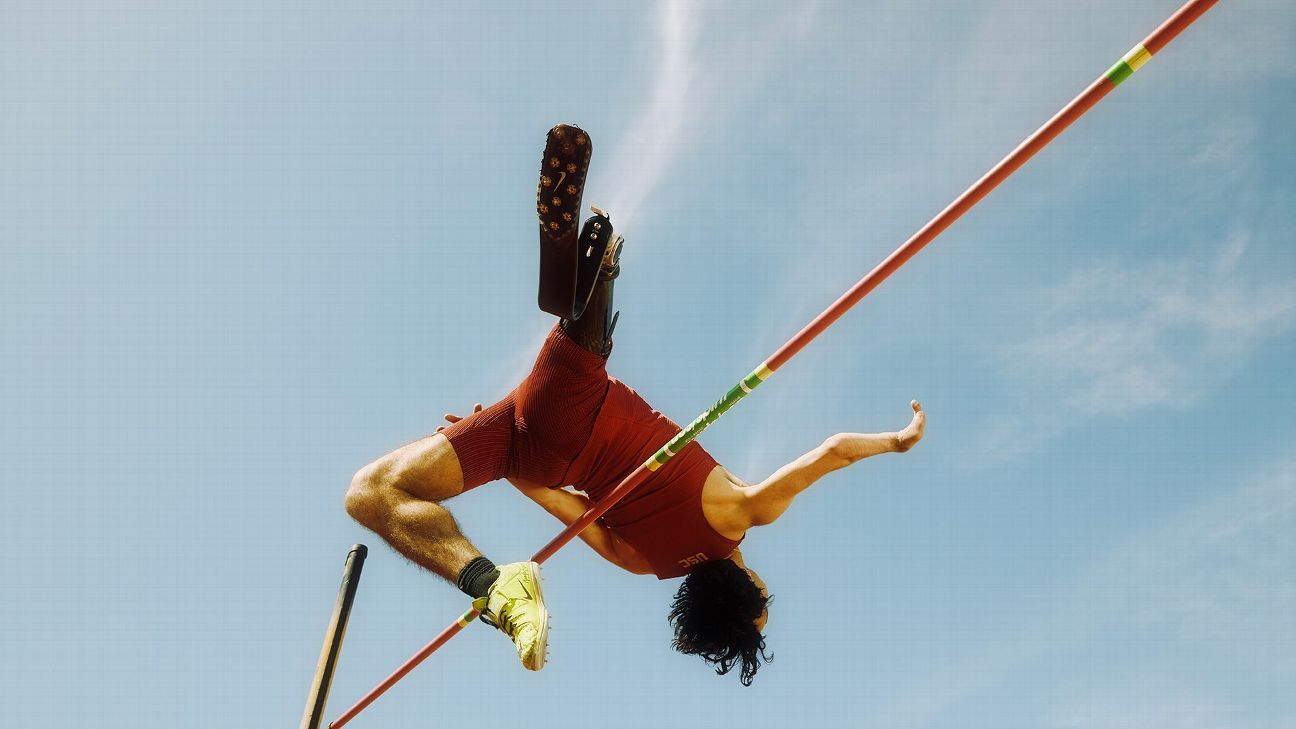
EZRA FRECH PLACES two black boxes in his backpack and jumps on his electric scooter to ride a few blocks to the University of Southern California, where he is about to give his professors a very good reason for having missed the first three weeks of the semester.
The boxes contain the two gold medals the 19-year-old just won at the 2024 Paralympics in Paris, in the 100-meter and the high jump for the T63 classification (athletes with a single-leg amputation above the knee).
“It’s USC; they are known for their Olympians,” says Frech, who was born with congenital limb differences. “I know the professors can understand the Olympics, but I wasn’t sure if they even realized the Paralympics were going on.”
As Frech, wearing shorts and a T-shirt, waits at a stoplight on Jefferson Boulevard near downtown Los Angeles, two USC students not-so-subtly whisper, “Is that that Paralympian?” One student takes out her phone and snaps a picture of him crossing the street. By the time Frech arrives at the Cinematic Arts building, multiple people have stopped him to ask for photos.
“I had been recognized before Paris, a little bit, because of the Tokyo Paralympics and my social media where I posted everything from my disability to training to modeling for fashion brands, but never to this extent,” Frech says. “I couldn’t believe it, honestly. It just made me feel like, ‘Wow, this is happening. I’m here for a purpose and reason.'” Frech keeps his gold medals in his backpack for his first few weeks of school, handing them to anyone who wants to put them around their necks.
Frech has been in the national spotlight since the 2020 Tokyo Games, where he was featured in the ads from Team USA and NBC. He’s also one of the faces of the 2028 Olympic and Paralympic Games in Los Angeles, where his Angel City Sports foundation provides sports clinics and competition opportunities to people with disabilities. With a social media following of more than 250,000, and celebrities such as Selena Gomez reposting his achievements, Frech gained the attention of the fashion world, where he has modeled for designers such as Hugo Boss.
But Paris brought new levels of fame to Frech, who, on his way to class on this clear September day, knows he’s making history just by being on USC’s campus. As the first above-the-knee amputee to be recruited to an NCAA Division I track and field program — let alone the winningest program in the country — Frech’s goal is to show the world that an athlete with a disability can compete against the best college athletes without disabilities.
He embraces the pressure of that goal with USC’s outdoor track and field season just months away. It will be a season in which he’ll struggle to medal as he confronts the challenges of such competition, and where he’ll hear from coaches, teammates and those he has inspired that his effort and determination are what matter the most. He’ll hear those messages, but he’ll also resolve to make the marks.
“For me, this is life or death,” Frech says. “I believe what I do out on the track, my marks, my medals, all impact how the world views disabilities. I genuinely believe my purpose on this Earth is to normalize disability, be an example of what’s possible as an amputee.”
HIGH JUMPER SAM Grewe, now Ezra’s mentor and Team USA teammate, became the first amputee to compete in NCAA Division I track and field when he walked onto Notre Dame’s track and field program in 2019. When Frech was in high school, he realized there weren’t any adaptive programs at the colleges he wanted to attend. So he made it his goal to become the first above-the-knee athlete to be recruited to a Division I program.
“I wanted to do something no one’s ever done before,” Frech says. “Trailblazing is in my DNA. I love pursuing things that seem impossible.”
Frech, who won gold in the high jump at the World Para Athletics Junior Championships at 15 and placed fifth in the high jump at the Tokyo Paralympic Games at 16, reached out to hundreds of NCAA coaches during his junior and senior years at Brentwood School in Los Angeles. “Our current marks to make the squad are seven meters in the long jump and 1.96 meters in the high jump,” one coach wrote to Frech. “We have some guys on the squad who are not quite at those marks yet, but they’re primarily decathletes or have other events.”
Those marks became a recurring theme in the coaches’ responses. “I realized that a lot of it had to do with the numbers alone,” he says. “And although I was trying to do everything to get there, I think it was also a little bit that some coaches weren’t willing to take a risk on a kid who was an amputee. There’s a lot of variables and unknowns with that. And maybe they just didn’t know if I was going to hit them in the time period, or ever.”
At the 2020 Tokyo Paralympics, 16-year-old Frech placed fifth in the high jump with a personal best 1.80 meters and eighth in the long jump with 5.85 meters. Shortly after, he was jumping 6.20 meters in the long jump and 1.83 meters in the high jump. Between his junior and senior years in high school, Frech raised his marks to 6.86 meters in the long jump and 1.95 meters in the high jump. In 2023, Frech set a world record and earned the gold medal in the men’s high jump T63 category with 1.95 meters at the world championship. Before his Paralympics and worlds experiences, Frech held the title for high jump at the World Para Athletics Junior Championships.
“I needed someone to believe in the vision,” Frech said. “Because this is the coach that I was going to be spending the most important four years of my career with. And if this coach isn’t going to believe in me when I’m on the cusp of accomplishing a specific mark, then how am I going to sit here with this coach and say, ‘I want to win three gold medals in L.A. in 2028 at the Paralympics’?”
The inquiries and rejections went on for nearly six months. Then, in summer of 2023, he heard from USC’s newly hired jumping coach, Jeff Petersmeyer.
“The first time I saw him jump, he just kept making bars,” Petersmeyer said. “He just kept making bars, and I was really impressed. And I was like, ‘Man, this guy’s got some potential.’ You could be the highest high jumper, the further long jumper, but if it’s not a good match, then you’re probably not the right person for us here at USC.
“But for Ezra, it’s not all about how high he jumps and how far he jumps, it’s about the person and what he brings to us and what we can bring for him and his development.”
By December, USC had offered Frech admission to the university with “the understanding that you will compete as a member of USC’s Men’s Track and Field team during at least your first year of enrollment at the university.” Ezra also received the inaugural Swim With Mike Foundation’s Amir Ekbatani Paralympic Scholarship, awarded to a Paralympian attending USC or UCLA.
“Ezra brings so much to the table with the team,” Petersmeyer said. “His energy, his drive, his resolve, his determination, his charisma. Everything is so important and salient to what we’re trying to do as a team. Having Ezra train with the upperclassmen who have titles and records already is so important to not only his success but the success of them too. He’s a valuable member of this team.”
ON MAY 11, 2005, Bahar Soomekh lay in the hospital bed at Cedars-Sinai in Los Angeles, her newborn son wrapped in a blanket in her arms. She wasn’t aware of the pandemonium happening around her in the delivery room.
Soomekh heard her husband, Clayton, asking everyone to leave the room. “What’s going on?” Soomekh remembers asking. She saw her doctor pacing back and forth. “What’s happening?” Soomekh yelled.
More doctors piled into the delivery room and took the newborn out of his mother’s arms. Bahar and Clayton were told their son was born with congenital limb differences — a condition where the limbs do not fully develop or form while the baby is in the womb. Physically, the newborn didn’t have a left knee, left fibula or four fingers on his left hand. His left leg was curved up toward his waist, and his left arm and hand were curled toward his chest. Despite numerous tests and 3D ultrasounds during the pregnancy, doctors missed the signs of a congenital condition.
Less than 24 hours later, doctors told the new parents that their son’s leg would have to be amputated and discussed options for surgeries that would provide mobility on his left hand. Soomekh’s mind raced. How is he going to be at school? Is he going to have problems? Are kids going to make fun of him? Bully him? What is his life going to be like?
The new parents decided on a name for their newborn: Ezra. The biblical name meaning “help” or “helper” in Hebrew spoke to the parents.
At 2 years old, Frech underwent groundbreaking surgery to amputate his left leg and transplant his left big toe to his left hand. Frech’s surgeons, at Boston Children’s Hospital pioneered the procedure with the goal of improving hand function and allowing engagement in physical activities. While his parents made a point of never hiding his disabilities, as he grew older, Frech began to realize how his body was different from those of other people he saw.
When he was 4, the year he got his first prosthetic leg, Frech was staring at himself in the bathroom mirror at his home in Brentwood, tears streaming down his face. He called to his mother. “Who looks like this, Mom? Who? No one is like me,” Frech sobbed. “Why did God pick me to not have the leg? Why did God pick me not to have the fingers?”
This was the first time Soomekh had seen her son break down over his disabilities. “Look at me,” she told him. “Remember your name. Ezra, which means to help, which means to teach. Your purpose is to help and teach the world about the beauty of disability. God picked you because you’re going to change the world.”
“Everything we did for Ezra was to build him up,” Soomekh says. “I would tell him, ‘Ez, put your head up. Walk with your chest out. I want you to walk into every room, every park and look and stare down everybody in that room. You let them know you arrived.'”
A few years later, on the grassy field at Brentwood School, 6-year-old Frech cradled a football in his left arm and looked around to see who was open. He was playing flag football with his classmates, and he was the quarterback. With only a few yards between him and the end zone, Frech took off running.
As he picked up speed, he realized his prosthetic leg was starting to detach. Within a matter of seconds, Frech’s running blade flew off his body and landed in front of four kids from the opposing team. Everyone froze. Still clutching the football, he hopped into the end zone for a touchdown.
“Everywhere I went in public, people were staring and pointing fingers and whispering. I felt like a zoo animal,” Frech says. “I was battling my own insecurities, battling my own perception of myself. The way I got through that was genuinely realizing that there was nothing I could do. I might as well make the most out of my life.”
By his 10th birthday, sports had become a huge part of that life. “When I was playing a sport, I wasn’t thinking about the fact that I was the only person at my school with a disability,” he says. “I was just one of the athletes.”
Playing on a club basketball team, Frech practiced a few times a week with his teammates and coaches. But he would dedicate time in his backyard, before and after school, to honing his skills, dribbling the basketball between his right leg and left prosthetic, navigating his own mobility on the court.
At practice and on game days, Frech displayed unwavering confidence. But as his skills developed, so did the disparaging comments. One day during basketball practice, Frech heard his coach yelling, “Are you guys kidding me? You’re letting the kid with one leg score on you right now?”
“Underestimating me probably pisses me off the most,” Frech says. “I always had to go the extra length to prove my worth, because it was so unlikely that the kid with the disability was going to be a starter on the team.”
“I’M READY TO go,” Frech says, as he walks onto the field at Allyson Felix Stadium on USC’s campus.
It’s February, less than one month away from his collegiate debut, and Frech has arrived at the track almost an hour before his teammates. He starts his warmup routine. After a few minutes, he removes his walking prosthetic and wipes down the upper part of his left thigh. Sliding on a rubber covering, he pushes his running blade onto his left thigh. Frech jogs up and down the turf field.
He removes his running blade and replaces it with his jumping prosthetic. “I’m ready to go,” he says again.
With teammates Elias Gerald and Brady Palen and Coach Petersmeyer standing adjacent to the high jump, Frech walks to his starting mark. In his first attempt, he clears the bar at 1.90 meters. Bouncing off the bright red mat, Frech races back to the starting mark. “Let’s go again,” he says. Catapulting off his right leg, he rotates his body to face his chest toward the sky and positions his left prosthetic to swing over the bar. Creating a gap between his body and the bar, Frech clears it with room to raise the bar even more.
Running into a curve with his prosthetic, Frech has little room for error in the high jump. Without a foot or ankle on his left leg, he can’t strike the ground in an angled position. Instead, he must run on the outside of the prosthetic, which increases his chances of slipping or falling. While propelling himself over the bar, Frech doesn’t have any control over the lower part of his prosthetic leg.
“If I place the blade literally centimeters to the left, right front or back off in any direction, it will throw off the entire run and everything will be messed up,” Frech says. “I’ve gotten really good at learning how to place it over the last 19 years so I know how to put it in the right position. Once I’m in the air, the prosthetic leg doesn’t provide me with a ton of momentum the same way swinging an able-bodied leg would. The reason I miss bars is because the blade takes it off.”
Springing off the mat, Frech moves to the side to watch a replay video from his coach’s phone. Catching his breath, Frech watches closely as his teammates prepare for their jumps.
Having recently returned from winning the NCAA Division I men’s indoor national championship — the 32nd national championship for the Trojans men — Gerald and Palen are two of the best jumpers in the nation. Clearing above 2.0 meters on a regular basis, the two upperclassmen set the standard for USC’s team. As the two took turns clearing above 2 meters, Frech focused on their form and energy.
“Having these three guys train together is so important to success, and Ezra’s development is going to be enhanced by having Brady and Elias,” Petersmeyer says. “Realistically, this season, we want him to earn a spot on the Big Ten roster. I know that’s something he’s trying to attain. He needs to get faster and stronger, and that’ll happen.”
Retreating back to the men’s locker room, Frech grabs at his phone and starts scrolling on social media. He shakes his head in disbelief. “Can you believe this?” Frech says to Gerald and Palen, showing them his phone. After posting videos on social media of him clearing bars at practice from the past few weeks, in anticipation of his season opener, Frech received a flood of comments and messages: “Isn’t this cheating?” “How is this not an advantage?” “Bro has a built in spring!” “You’re cheating.”
“People don’t understand how a prosthetic works,” Frech says. “They don’t understand the disabled community. And they just say ignorant stuff that makes absolutely zero sense. But usually the good comments outweigh the bad.
“But ever since posting about USC, it’s definitely increased.”
A few hours later, Frech sits in his car and hits record on his phone. The next day, he uploads a reel on Instagram: “People say I have an advantage. Let’s talk about it.
“If having a prosthetic leg was cheating, then why is my world record in the long jump, 100-meter and high jump way less than an able-bodied athlete?”
In the weeks following, Frech competed for USC at four invitationals where he battled to find a place on the leaderboard. After claiming second in the high jump and seventh in the long jump at the first outdoor meet of the year, the Trojan Invitational, Frech traveled with the team to the LSU Battle of the Bayou, where he failed to clear a valid height and didn’t place on the leaderboard. Finishing 27th in the long jump at the 65th annual Mt. SAC Relays in April, Frech knew his first season was coming to a close. In his last meet with the team, at the USC vs. UCLA Invitational, Frech finished fifth in the high jump and seventh in the long jump.
“It’s disappointing to not perform my best,” Frech says. “I know what I’m capable of, and I know I have what it takes to get there. We knew that there was going to be a learning curve and that it would take some time.”
USC went on to win its 33rd men’s national championship in June.
“Ezra wasn’t one of the jumpers for us at the national championships, but he showed up and gave it his all,” Petersmeyer says. “He helped us win these titles. He’s a valuable member of the team.”
This summer, as Frech prepares for the 2025 World Para Athletics Championships in October, he’s not shy about his goals for his next season with the Trojans.
“I will make the Big 12 team. I will travel to more away meets. And I will continue to improve my skills and develop.
“It wasn’t expected that I would come out and win everything in college. This is new territory. But I’m here,” Frech says.
WHEN FRECH WAS 12, he sprinted to the middle of a grassy field, away from other competitors and parents. He pounded his hands against his head and started crying.
It was the 2013 Endeavor Games in Oklahoma, Frech’s first time participating in sporting events alongside other athletes with disabilities. The 8-year-old’s father, Clayton Frech, signed him up for everything, including every track and field event.
Frech attempted the long jump first. With his running blade securely attached, Frech took off down the runway. He sprang into the air and landed in the sand. “We had no idea what we were doing,” Clayton Frech says. “It was his first time long-jumping. He was just running and jumping.” But then, Frech jumped farther and farther, soon breaking the youth record in long jump.
Later in the day, in the high jump, Frech ran toward the mat and flung himself in the air. His prosthetic hit the bar. Some of the adult athletes in attendance started giving him pointers to control his prosthetic and carry himself high enough over the bar.
After multiple failed attempts, Frech scurried to the middle of the grassy field adjacent to the high jump event. “I was so upset about how I jumped,” Frech says. “This was my first time ever high-jumping. I don’t even know what I was comparing myself to, why I was so upset. I was so competitive. It’s not even competitive against other people but competitive against what I believe I’m capable of.”
Clayton Frech saw a need for more sporting events and clinics for children and adults with physical disabilities. Soon after that first Endeavor Games experience, he created Angel City Sports, a nonprofit dedicated to providing free access to adaptive sports opportunities for youth, veterans and other adults in Southern California. The organization hosts the Angel City Games each year in L.A., with sports clinics and competitions.
Five years later, in 2018, Frech walked onto the track at Harvard-Westlake school in Los Angeles. He watched as a young boy hurled himself over the high jump bar at the fifth annual Angel City Games. Nathan Kuhn, a 7-year-old born with congenital limb differences, was clearing bar after bar. “Is this his first time?” Frech asked the officials. “This is unbelievable.”
Kuhn, inspired by Frech’s social media posts as he trained for Tokyo, had asked his mother, Patty Kuhn, if he could attend the Angel City Games and try “Ezra’s events.”
“I just wanted to be like him,” says Kuhn, now 12. “I watched videos of him jumping over the bar, and I thought if he could do it, then maybe I could try it too. It was the first time I ever saw anyone that looked like me do something like that.”
Kuhn is in the stands at USC in March as Frech prepares to compete in the high jump competition of his first collegiate meet.
Frech swaps out his prosthetic for his high jump blade. There are only four competitors in the high jump event. Gerald, who holds the collegiate record for high jump at 2.30 meters, told Frech when he joined the team, “Welcome home. This is where you belong.” Gerald reminds him of that today. “You are USC track now. Show everyone why you’re here.” Frech takes his starting mark and clears his first attempt at 1.80 meters.
In his second attempt, Frech clears 1.85 meters. Pushing him to the top spot on the leaderboard. Frech clears his next attempt at 1.90 meters. For his fourth attempt, the bar is raised to 1.95 meters, just above his Paris Paralympic record of 1.94.
Looking at the crowd, Frech stars clapping his hands. “Let’s go!” he yells. The crowd chants, “Ezra, Ezra, Ezra.” Kuhn nudges his mom, smiling. “This is so cool.”
With a dash toward the mat, Frech leaps over the bar before snagging it with the crest of his body. The bar drops to the mat. “Ahhh,” the crowd sighs collectively. The scoreboard flickers to reveal Frech’s second-place finish, behind USC alumnus Earnest Sears III, who entered the competition as an unaffiliated competitor and finished with a 2.15-meter best. Frech ties with Long Beach State’s Cytres Vives, finishing ahead of Harvard’s Daire Mahon.
Hugging his coach, Frech pauses on the track before retreating to the stands to greet his family and friends. A small crowd grows around Frech, and he shakes hands and poses for more photographs. Clayton pulls out Ezra’s two gold medals.
“Nathan, want to put them on?” Frech says. “You’re going to get these one day.”
The 12-year-old hangs them around his neck.
“How does it feel?” Frech asks.
“It feels powerful,” Kuhn says.
Sports
The $2 Million Story Behind Hip-Hop’s Wildest Character
Flavor Flav turned being absolutely crazy into a $2 million fortune, and honestly, his journey is way more entertaining than most Hollywood movies. The clock-wearing rapper’s flavor flav net worth proves that being yourself (no matter how weird) can actually pay off. So check this out – William Jonathan Drayton Jr., who we all know […]
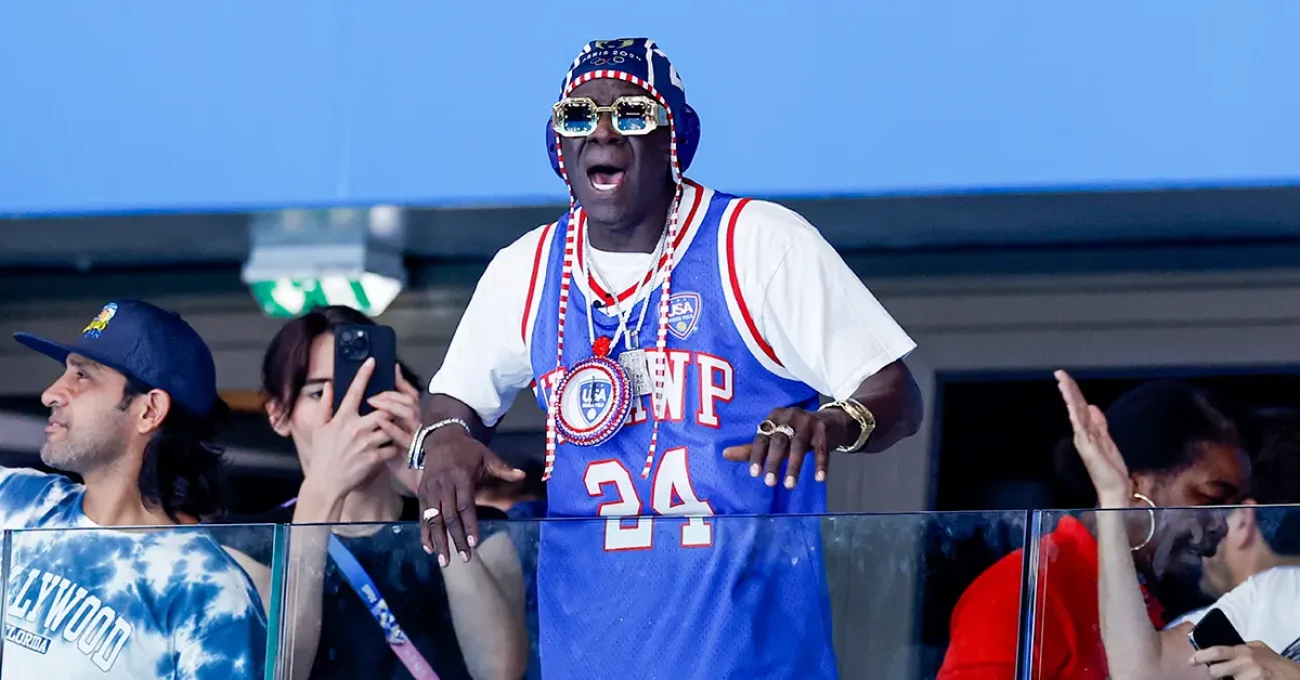
Flavor Flav turned being absolutely crazy into a $2 million fortune, and honestly, his journey is way more entertaining than most Hollywood movies. The clock-wearing rapper’s flavor flav net worth proves that being yourself (no matter how weird) can actually pay off.
So check this out – William Jonathan Drayton Jr., who we all know as Flavor Flav, basically went from being a complete mess to making $2 million by just being the most extra person in every room. Born March 16, 1959, in Roosevelt, New York, this dude was getting arrested for stealing stuff as a teenager, then somehow ended up becoming one of the most famous faces in hip-hop history. Flavor flav net worth might not be Jay-Z level, but man, his story is way crazier.
Flavor Flav Net Worth Journey: From Cooking School Dropout to Rap Star
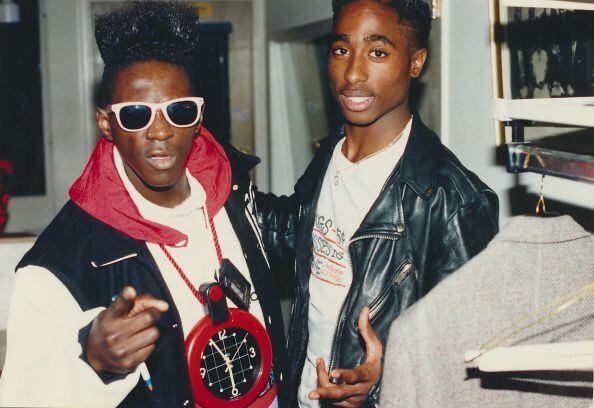
Here’s the thing that’ll blow your mind – before Flavor Flav was screaming “Yeah boyeeeeee!” on stage, he actually wanted to be a chef. No joke. After getting kicked out of high school in 11th grade (too many run-ins with the cops), he decided to get his act together and went to culinary school in 1978.
His first real paycheck came from working at his dad’s restaurant called The Soul Diner in Freeport. Picture young Flav flipping burgers and serving soul food – probably the only future rap star washing dishes and dreaming of making beats. But life had other plans when he enrolled at Adelphi University and met this guy Carlton Ridenhour, who later became Chuck D.
They started messing around on Chuck’s college radio show, and that’s when “Flavor Flav” was born – it was literally just his graffiti tag that became his stage name. The first real money from music came in 1986 when they dropped “Public Enemy #1.” This track was so fire that Def Jam Records’ Rick Rubin heard it and wanted to sign Chuck D immediately. The crazy part? Rubin didn’t even want Flav at first, but Chuck D was like “nah, we’re a package deal.” That loyalty probably saved Flav’s entire career.
How Flavor Flav Actually Built His $2 Million Through Beats and Reality TV
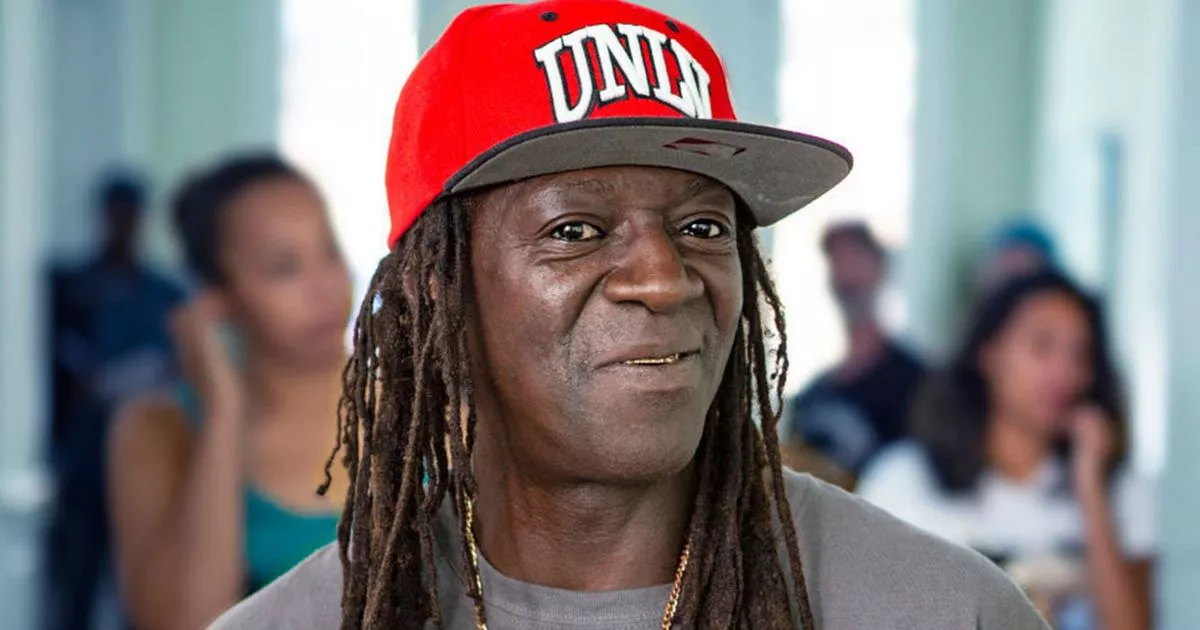
Public Enemy in the late 80s was absolutely insane. Their debut album “Yo! Bum Rush the Show” dropped in 1987 and got people’s attention, but “It Takes a Nation of Millions to Hold Us Back” in 1988? That thing went double platinum and started bringing in serious cash.
Songs like “Fight the Power” and “911 Is a Joke” (where Flav finally got to show off his solo rap skills) are still making him money today through royalties. Public Enemy sold millions of records, got six Grammy nominations, and put out 14 studio albums. That’s a lot of checks coming in over the years.
But here’s where it gets really interesting – Flav probably made more money from reality TV than from all his rapping combined. When he joined “The Surreal Life” in 2004, it was supposed to be just a fun little show. Then he started dating Brigitte Nielsen on camera, which led to “Strange Love,” which then became “Flavor of Love.” And “Flavor of Love”? Dude, that show was massive. People were obsessed with watching Flav try to find love with a house full of women competing for his attention.
Flavor Flav Net Worth Peak: When Reality TV Made Him Rich
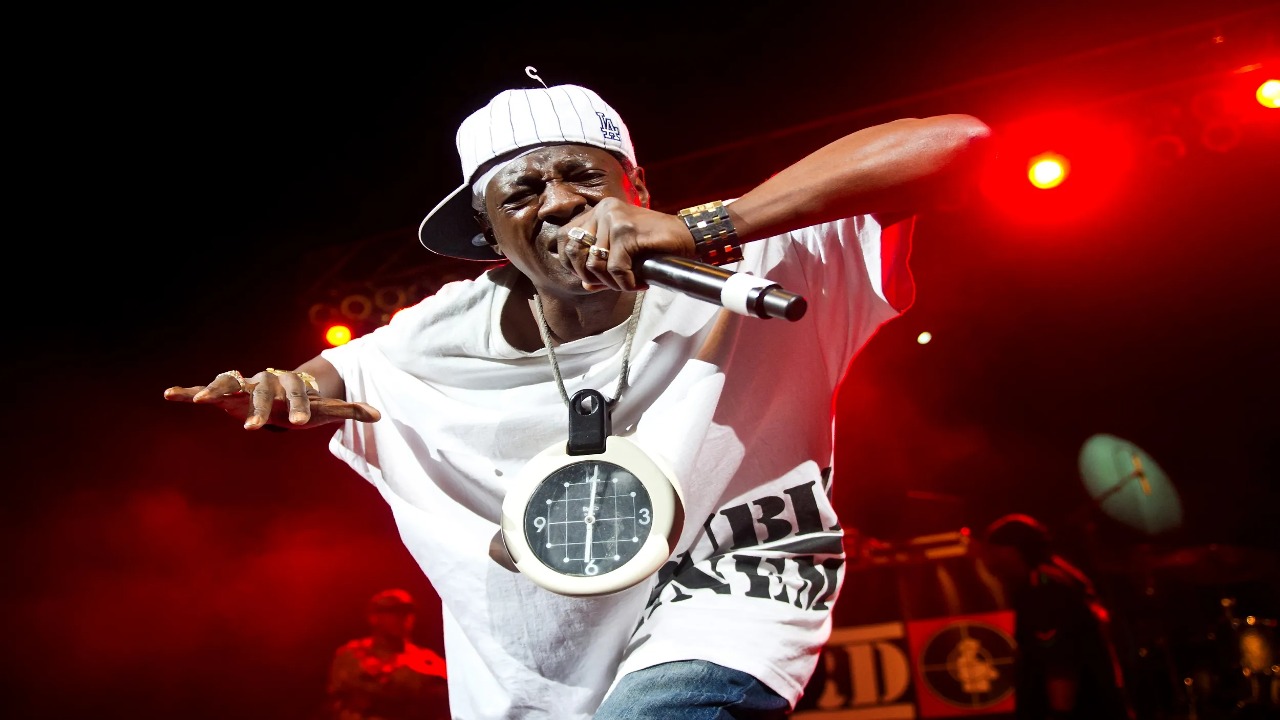
The mid-2000s were when flavor flav net worth really exploded. “Flavor of Love” wasn’t just popular – it was a straight-up cultural event. Everyone was watching, everyone was talking about it, and Flav was getting paid big time for just being his ridiculous self on camera.
During this golden period, money was coming from everywhere: Public Enemy royalties, fat reality TV paychecks, club appearances, endorsement deals, you name it. He even tried opening restaurants – “Flavor Flav’s House of Flavor” in Vegas in 2011 and “Flavor Flav’s Chicken & Ribs” in Michigan in 2012. Both places eventually closed, but hey, at least he tried to diversify.
Recently, Flav signed this wild five-year deal to sponsor USA Water Polo in 2024. Like, who thinks “I need Flavor Flav to hype up my water polo team”? But that’s exactly the kind of random stuff that keeps him relevant and keeps the money flowing.
Current Life: Where Flavor Flav Net Worth Stands Right Now
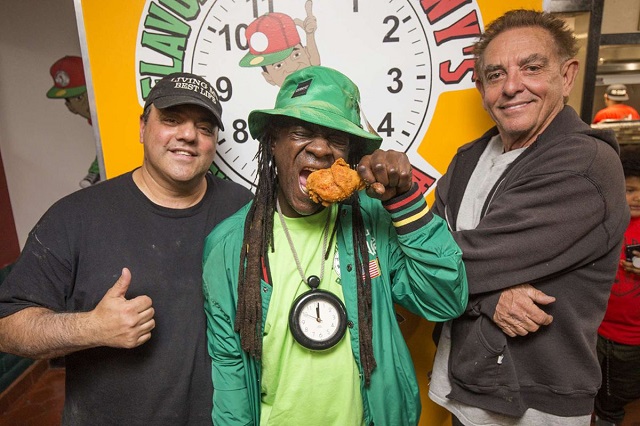
These days, flavor flav net worth stays steady at around $2 million, and he’s pulling in about $500,000 a year. That breaks down to roughly $40,000 a month, which isn’t bad for a guy who’s basically semi-retired from making new music.
His money comes from all over the place: old Public Enemy songs still getting played and streamed, random TV appearances, social media endorsements (yeah, he’s on Instagram doing sponsored posts), and personal appearances at events. In 2008, he dropped $685,000 on a house in Las Vegas – 3,708 square feet with four bedrooms. Not mansion-level, but definitely nice.
One of the coolest things about Flav lately is how he’s been helping people out. During the 2024 Olympics, he sponsored the USA Women’s Water Polo team when they were broke, and even paid rent for Olympic athlete Veronica Fraley. That’s pretty awesome for a guy who only has $2 million compared to billionaire celebrities who won’t even tip their waiters.
Flavor Flav’s Life Lessons: How to Stay Successful and Crazy
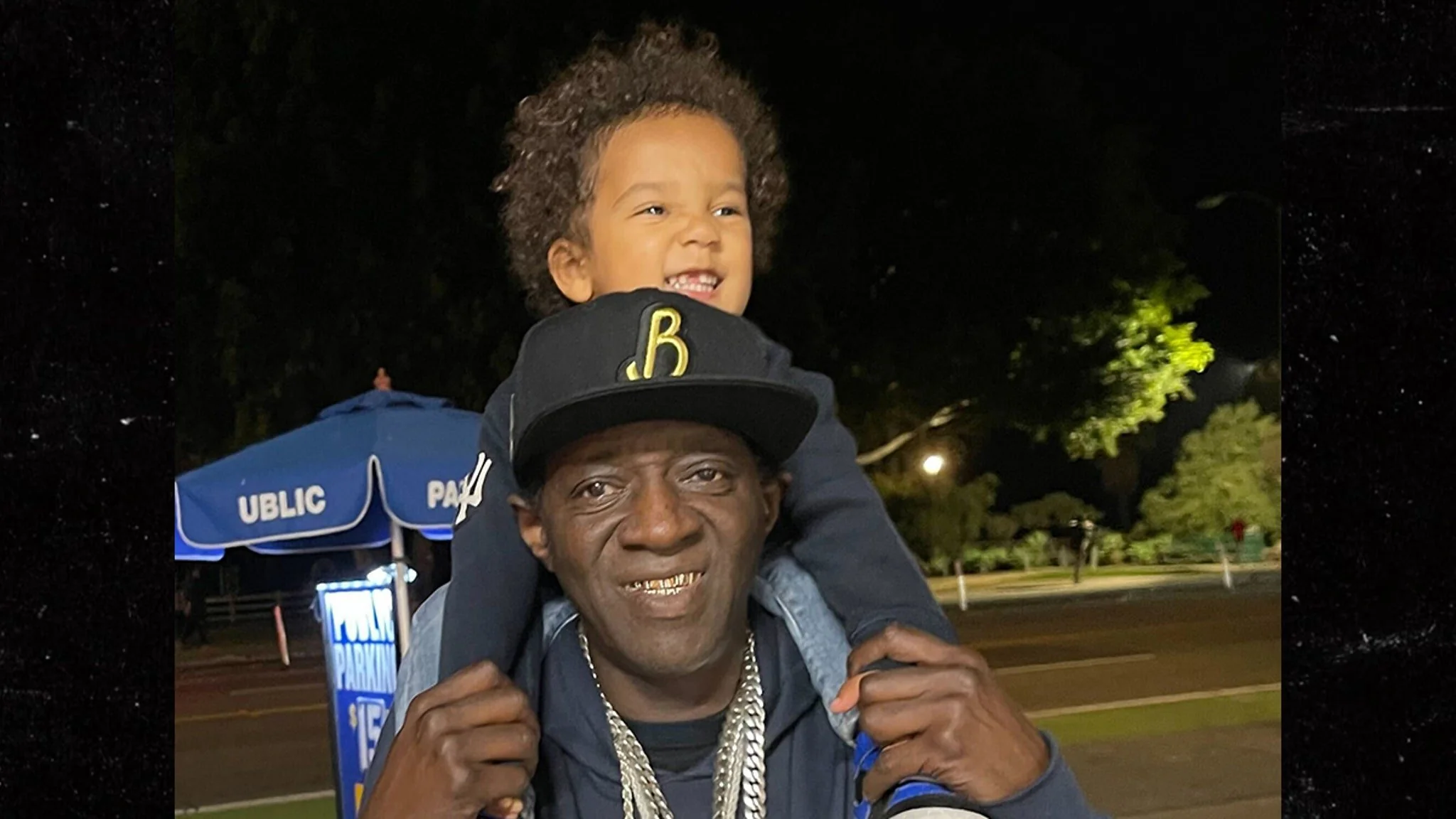
Over his wild career, Flav has dropped some surprisingly solid advice about making it in life that helped build his flavor flav net worth:
- Take Care of Yourself First: His best advice? “Do whatever it takes to make myself happy, so that I’ll be able to make others happy. If I’m not happy, I can’t make other people happy.” Basically, you can’t pour from an empty cup.
- Keep Growing: “I’m not doing no more ‘Flavor of Loves.’ I’m trying to grow. I don’t want to stay on the same page. You can’t stay on the same page in order to get to the next chapter.” Flav knew when to move on instead of beating a dead horse.
- Share Your Knowledge: “Definitely, I think I’m a life coach for real. The lessons I give are lessons you can take to the bank.” He believes in helping other people learn from his mistakes and successes.
- Bring Back the Fun: “What I’m trying to do is put back into rap music what’s missing – which is the good part, the fun part, that party part.” Entertainment should be entertaining, not just serious all the time.
- Stay Weird: Throughout everything, Flav never tried to be normal or fit in. His giant clocks, crazy outfits, and “Yeah boyeeeeee!” screams were 100% authentic to who he was.
- Bounce Back: Despite going through addiction, legal troubles, and business failures, Flav kept finding ways to reinvent himself and stay relevant.
Flavor Flav’s story is proof that you don’t need to be the smartest or richest person to make it. His $2 million net worth represents something way more valuable – the ability to be completely yourself and turn that into a decades-long career. From hip-hop legend to reality TV king to Olympic team sponsor, Flav shows that authenticity and personality can take you further than you’d ever imagine.
Sports
2025 Gold Cup Prize Money
The Gold Cup final features a historic matchup between the United States and Mexico, highlighting a fierce soccer rivalry. The U.S. advanced by defeating Guatemala, while Mexico overcame Honduras to secure their spot. Beyond the competitive spirit, the championship also boasts significant financial incentives with a prize pool exceeding $5 million. The winner will receive […]



The Gold Cup final features a historic matchup between the United States and Mexico, highlighting a fierce soccer rivalry. The U.S. advanced by defeating Guatemala, while Mexico overcame Honduras to secure their spot. Beyond the competitive spirit, the championship also boasts significant financial incentives with a prize pool exceeding $5 million. The winner will receive $1 million, with payouts distributed at the discretion of the respective federation. The final is set to kick off at NRG Stadium in Houston this Saturday evening.
By the Numbers
- The Gold Cup champion will earn $1 million.
- The overall prize pool for the tournament exceeds $5 million.
- Runner-up will receive $500,000; third place, $200,000; fourth place, $150,000.
- Each of the 16 teams will also get a participation bonus of $200,000.
Yes, But
The financial stakes could introduce pressure, but this familiarity breeds high-level performances; both teams have extensive experience in knockout matches, which might mitigate the impact of the monetary rewards.
State of Play
- The rivalry between the U.S. and Mexico intensifies with this final match.
- Both teams enter the final on a winning momentum from their semifinal matches.
What’s Next
Following the Gold Cup final, the winning federation will allocate the prize money, possibly affecting team investments in player development and future tournaments.
Bottom Line
The Gold Cup final is not just about glory but also substantial financial rewards that could shape the future of soccer in the winning nation. This match serves as a crucial test in the ongoing rivalry with higher stakes on the line.
-

 College Sports1 week ago
College Sports1 week agoWAC to Rebrand to UAC, Add Five New Members in 2026
-

 Technology3 weeks ago
Technology3 weeks agoPolar is teasing a Whoop alternative without subscription
-

 Technology3 weeks ago
Technology3 weeks agoI loved the Whoop MG, but didn’t love the price: that’s why I’m excited about this mysterious new fitness band from a major Garmin rival
-

 Motorsports6 days ago
Motorsports6 days agoWhy Cosmetics are Making Up for Lost Time in Women’s Sports
-

 Professional Sports2 weeks ago
Professional Sports2 weeks agoAlex Pereira responds to rumors of UFC heavyweight title fight with threatening message
-

 College Sports3 weeks ago
College Sports3 weeks agoLocked On Women's Basketball
-
College Sports2 weeks ago
Women's Basketball Thanks Shannon LeBeauf for 14 Seasons
-

 College Sports2 weeks ago
College Sports2 weeks agoAlabama Basketball
-

 Health3 weeks ago
Health3 weeks agoKyrie Irving's Mental Health Message
-

 Technology1 week ago
Technology1 week agoPet fitness and wellness trends for a healthier and happier dog


































